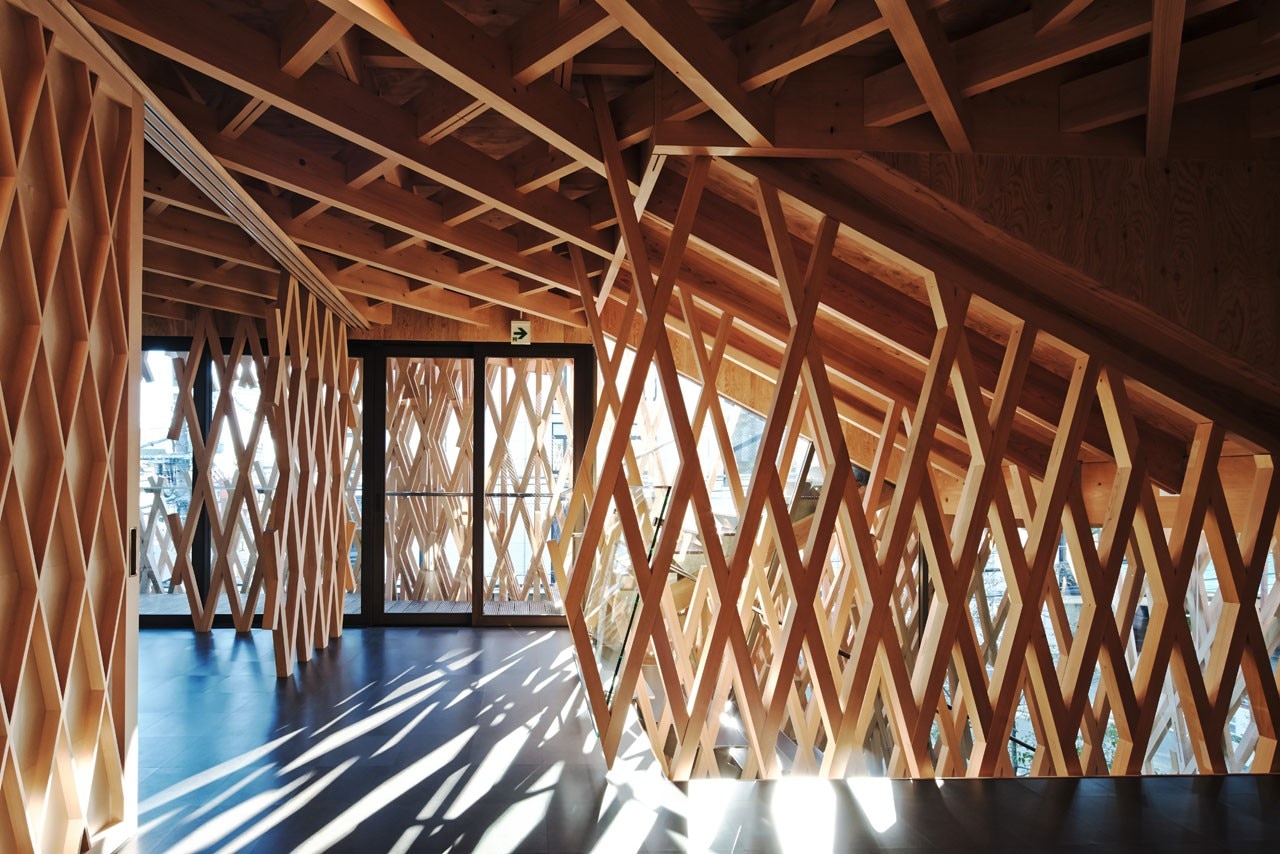
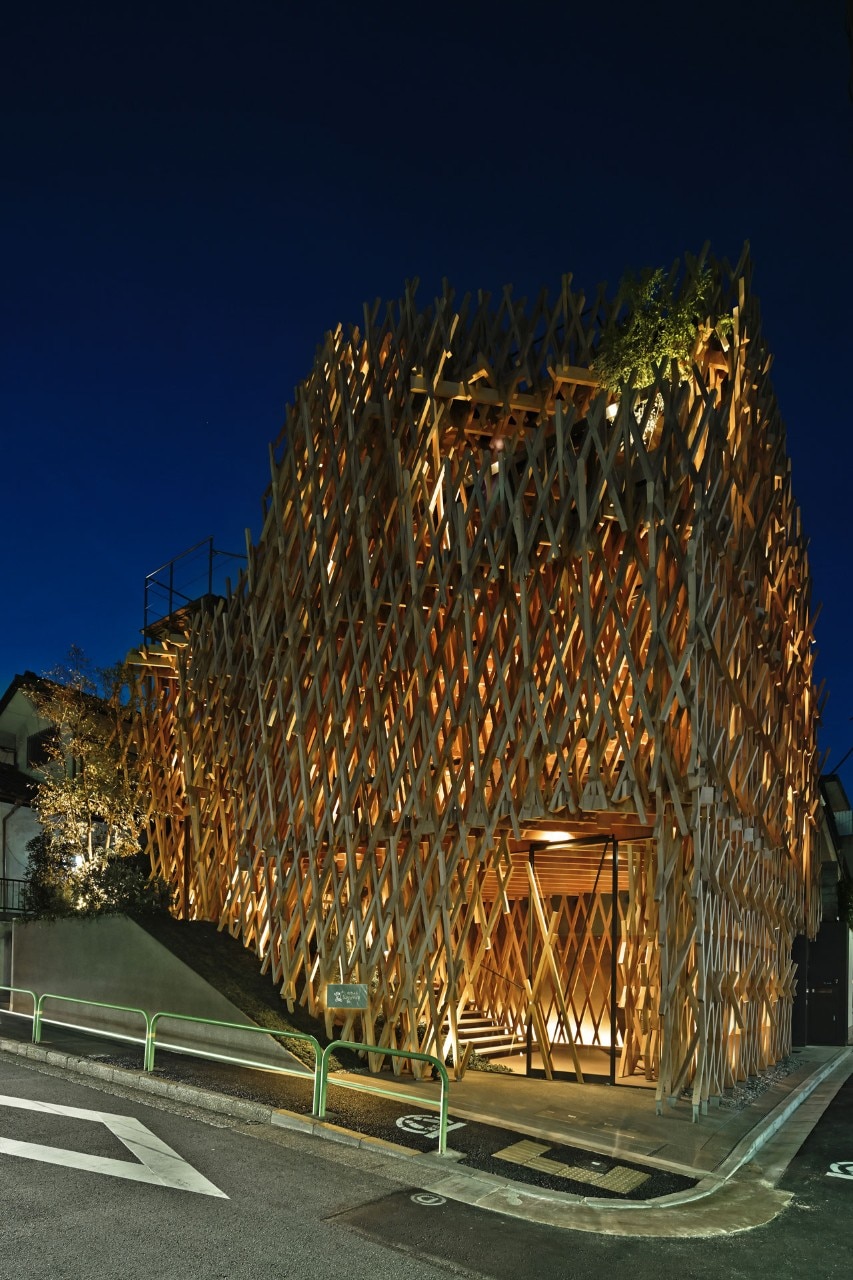
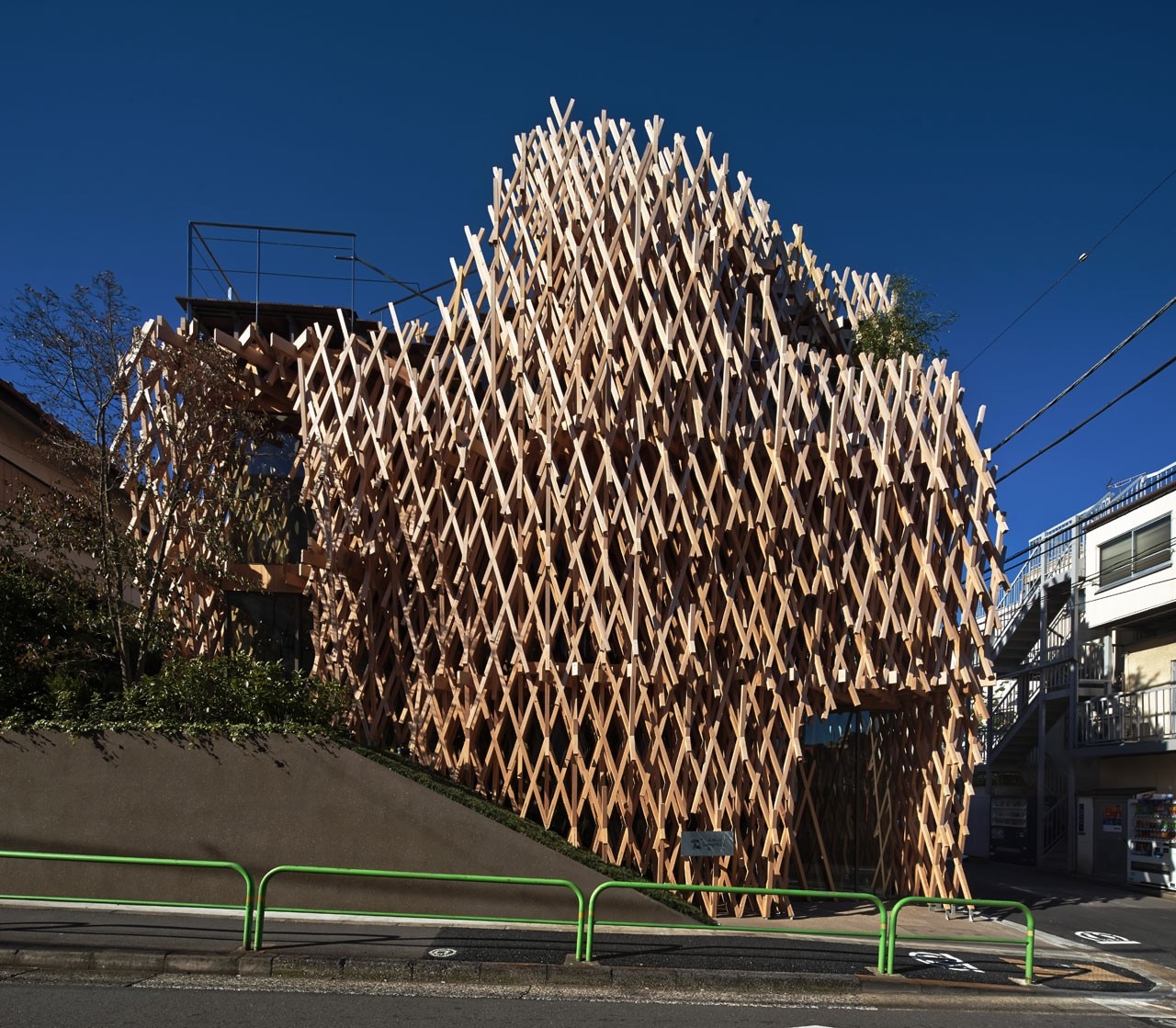
Rafael A. Balboa, Ilze Paklone: 2013 was a relevant year for Kengo Kuma. We saw the culmination of many ideas already acquired in previous buildings. Specifically regarding your latest project for SunnyHills, there are good resonances between the business model of your client and the way you are making architecture at this point. The building somehow reminds us the wooden sculptures of Japanese artist Tadashi Kawamata.
Kengo Kuma: I think that the business model of the client is very unique, because it was started not because of money. The client already had a big business. Their hometown is one of the poorest areas in Taiwan, but a good place for pineapple plantations. This is a reason why they started their pineapple cake business there. Pineapple cake itself is very typical and popular sweet in Taiwan. They wanted to do it differently, using only the very best pineapples from their hometown.
I felt sympathy to their business model and I decided to accept the project. It is very similar to what we are doing with architecture. The goal of our architectural design is also to activate local places within Japan and to show the quality of materials. If I can show the essence of those materials, it can be helpful for local business. Not in the short time, but in the long‑term.
Regarding the artwork of Kawamata, it is always something put on the existing structure. What we did for SunnyHills, is rather a very structural solution. Kawamata’s work sometimes looks more like decoration.
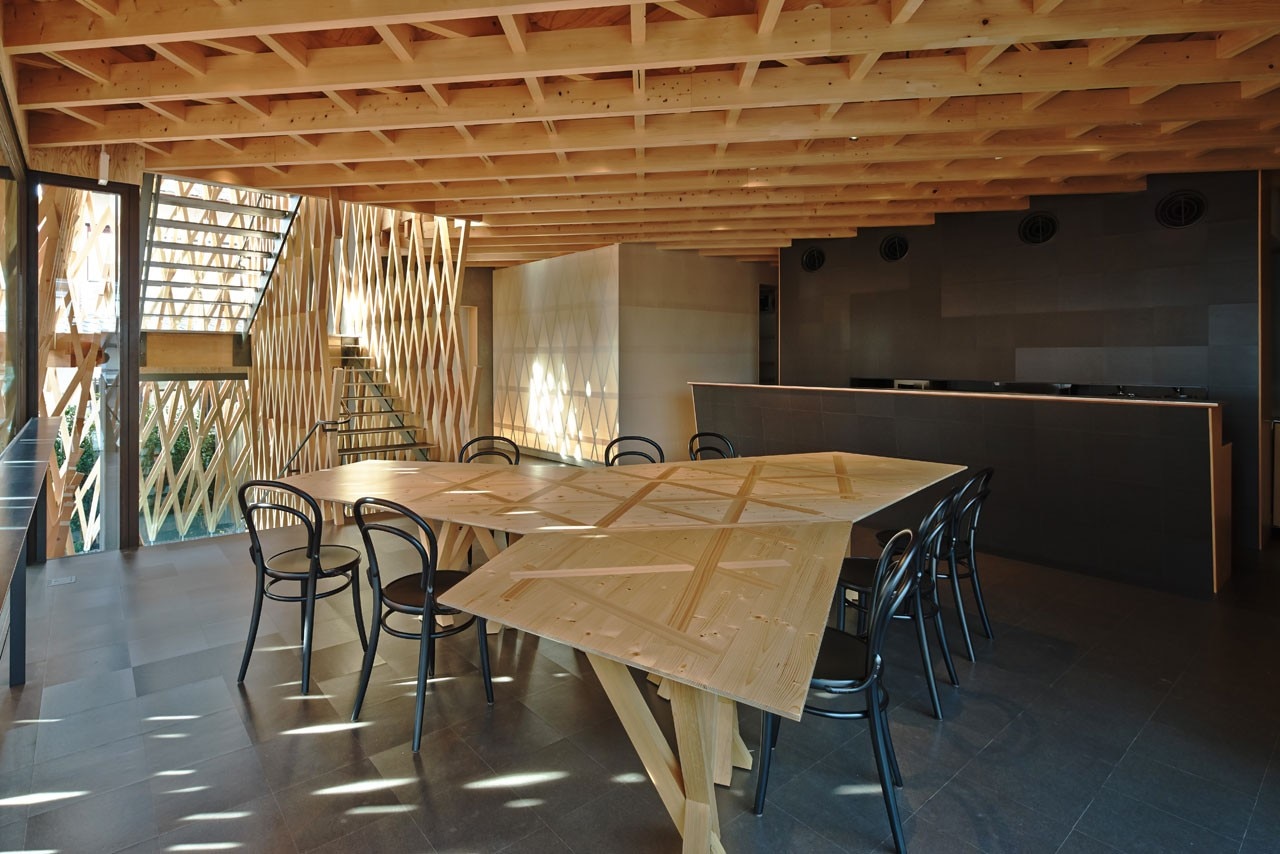
Rafael A. Balboa, Ilze Paklone: The ancient Chinese book of philosophy ‘I Ching’ invites us to embrace changes as part of our human nature. The work of Kengo Kuma is precisely in constant change, even when there is a line and logic connecting each project there is a clear will to evolve the use of materials. How do you conceive these ideas in this project?
Kengo Kuma: The beginning of these project series is the one named Cidori, which started in 2004. For that project we studied the joinery of the traditional Japanese architecture and found a very interesting system from Hida Takayama [a town in Gifu prefecture famous for its carpentry tradition]. Cidori system is very democratic, originated from children’s toys. Anybody, even kids can participate in creating three‑dimensional structures with this system called Jigoku Gumi.
We constructed a small pavilion by cidori system in Milan (2007) with my students. I was very satisfied with the project. I wanted to go to the next step to build not only temporary small pavilion, but a permanent building. Then we did the GC Prostho Museum Research Center in Kasugai (2008-2010). It was a big challenge to design a 10m high building with cidori system. I wanted to create also a more dynamic space. We changed the perpendicular system to set it diagonally for the Starbucks Coffee project at Dazaifu Tenmangu (2011). The challenge was to create and control the spatial flow by the structural system.
The concrete architecture in the 20th century was opposite. The idea of creating the flow of space is very different from the statics of concrete frame structures. If we want to create the flow of the space with the concrete frame structures, we can add extra surface or screen to the statics of the frame. The static frame and the secondary surface are basically separated.
To make architecture and to construct a building in the 20th century was also considered a professional thing of the big contractors and construction companies. The wooden construction before the 20th century in Japan was a very open system. Anybody could build with it, because the wood is a simple material to cut and join. I would like to go back to the traditional democratic construction system. Cidori can be the best example of such system.
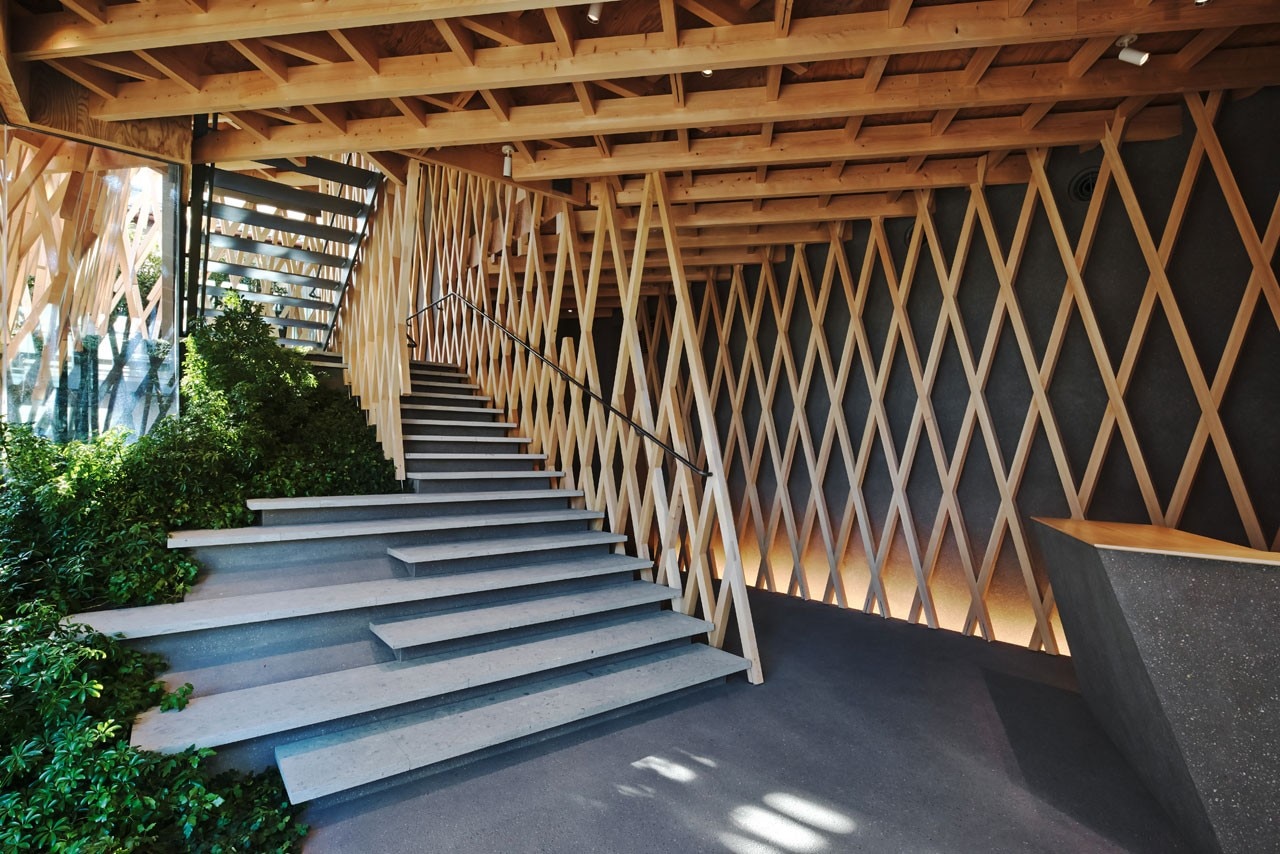
Rafael A. Balboa, Ilze Paklone: The position of the wooden components are very relevant to achieve this flow. Our body navigates the space primarily horizontally, and in the case of Starbucks Café in Omotesando the components follow that position creating a very dynamic effect. In the case of SunnyHills the components are designed to be perceived vertically, comment us more about this solution.
Kengo Kuma: This is very similar to the idea of gothic cathedrals and the sum of vertical structural elements that create flow in the space. Renaissance and Modernism are basically very static systems. We are inspired by the gothic space. For SunnyHills we developed further the idea of the diagonal structural system that we already used in the Starbucks project. Structural engineer Jun Sato proposed an interesting solution to support three floors of the building. It was adapted from the Jigoku Gumi joinery system. Traditionally shoji screens are fixed by Jigoku Gumi system without nails and glue. So far it had not been used for constructing a building.
Jigoku Gumi system is a superposition of two layers [of slender wooden sticks], tightly fixed together with a third layer. It is similar to weaving or knitting. Adapted Jiigoku Gumi system is structurally much stronger than the one we used in Starbucks, which supports only the roof. And that is an adaption and invention of Sato san. In this sense, there is an encounter between traditional system and very contemporary structural system.
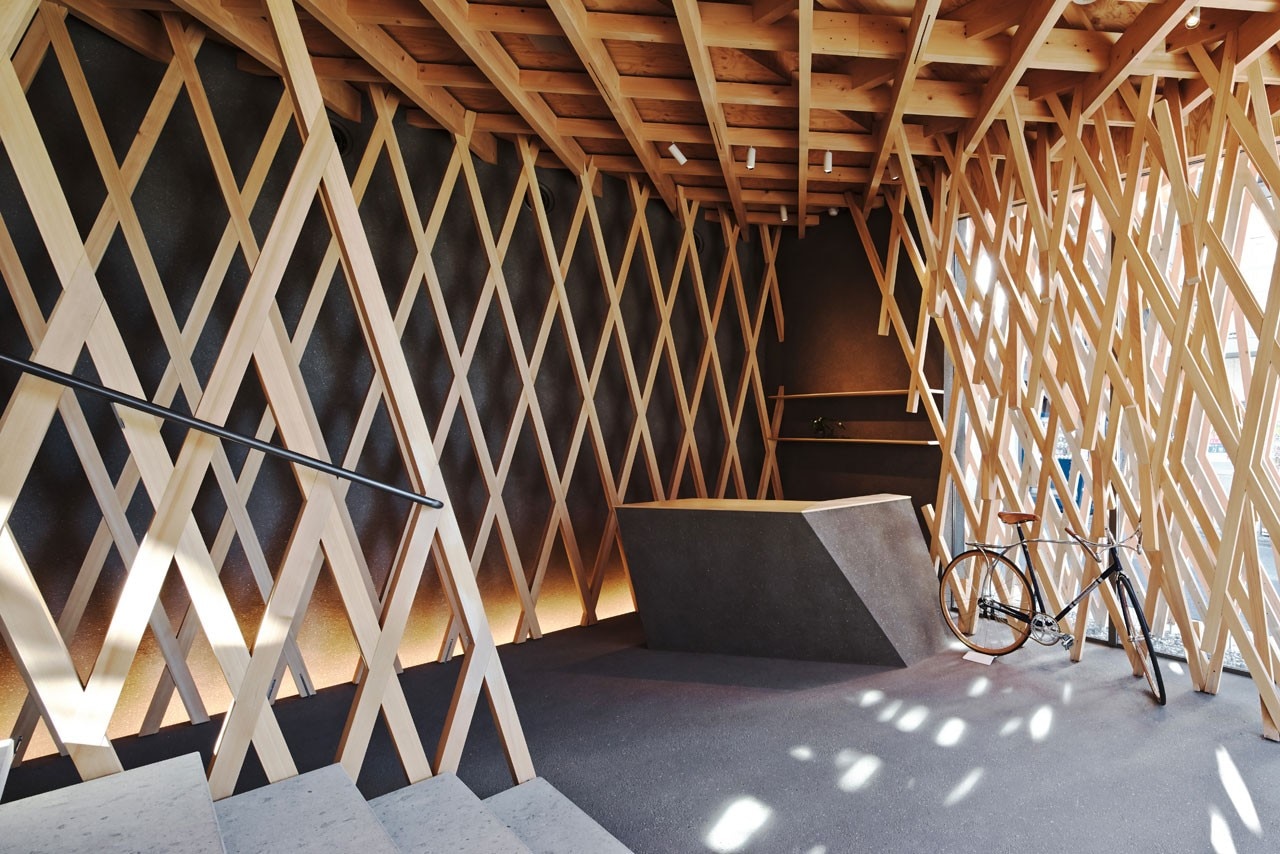
Rafael A. Balboa, Ilze Paklone: You have just mentioned the democracy of this system, however in traditional Japanese architecture sometimes the most elevated knowledge used to be the hidden. Take for instance the carpentry codes contained in the ‘Shomei’ (design manuals kept secretly by carpenter families). Sometimes the refinement of techniques in Japan have lead to very undisclosed knowledge, but it seems that you are trying to make use of that knowledge again.
Kengo Kuma: Originally to drink tea was part of a very democratic culture. Eventually tea masters tried to make their own sect. The development of wooden construction has the same history. Originally wooden construction was very democratic. With time this kind of flexible system was becoming a hidden secret. ‘Shomei’ and sukiya carpenters tried to enclose their knowledge and wisdom.
The base of my practice is modernism. In the 20th century Japanese traditional wooden buildings were taught and learnt by a different system. Togo Murano, Isoya Yoshida and other sukiya masters had their own sect and separated systems. They liked that kind of refinement. I want to break it, I think it is my goal.
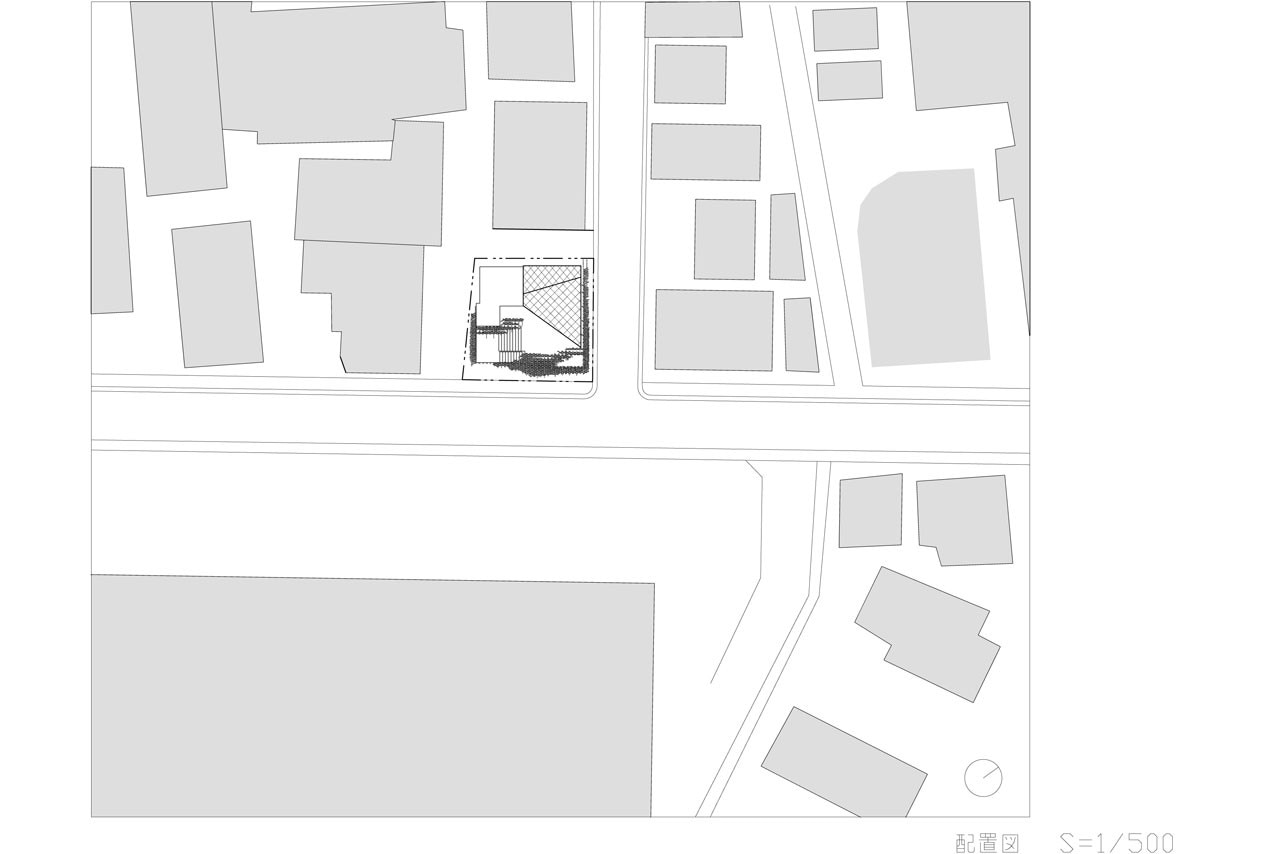
Rafael A. Balboa, Ilze Paklone: Recently Japanese government is fostering again the construction industry to use wood in urban areas. Taking advantage of this policies, which other aspects are you aiming to continue experimenting with this material?
Kengo Kuma: Before Meiji era Tokyo was an amazing and dense mega-polis of wooden buildings. The weak point was fire and earthquakes. Because contemporary technology can make the wood inflammable and stop deterioration, we can bring back wood to the big city.
Japanese culture and mentality were influenced by the use of the wood in the city, by the softness of the material and human scale of construction. By the 20th century, when concrete came to Japan, this kind of mentality was devastated. The price is loss of our own identity. If I can bring back the wood to the big city and can become the main material again, we can recover the mentality of Japan again. It is my dream.
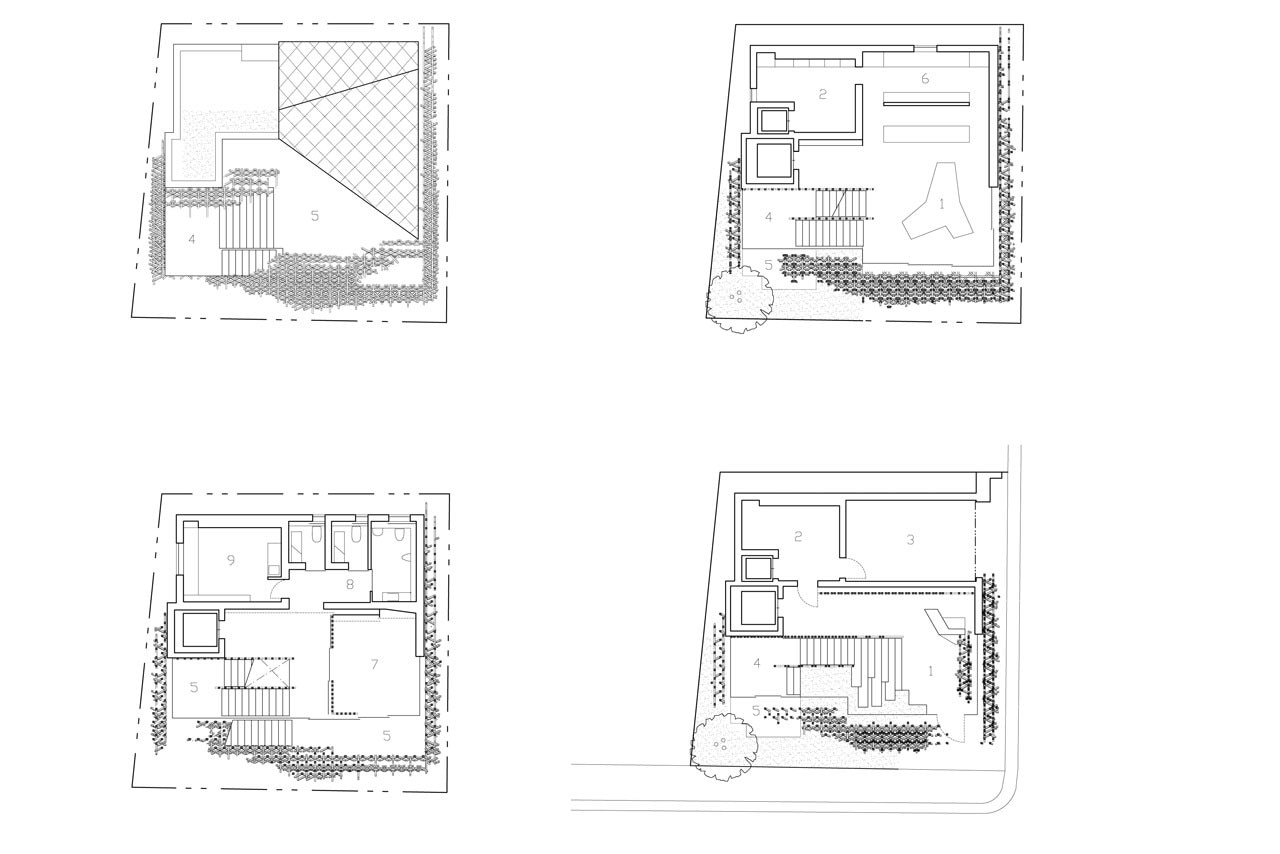
Rafael A. Balboa, Ilze Paklone: Wood has positive qualities and constraints as any other material. What about the aging of the material?
Kengo Kuma: I think aging of the wood is a good thing. It is very natural. Aging is a value in Japanese culture, we appreciate the aging of the material. Natural aging makes the city more mature. It is a very sophisticated mentality. The mentality of the 20th century was appreciation of the new. What looked new, was good. For SunnyHills we exposed the wood. It is treated to be inflammable. The life span if that material is more than twenty years. Step by step we will see different colors of the wood. I like that kind of play. SunnyHills can show the beauty of aging, I believe.
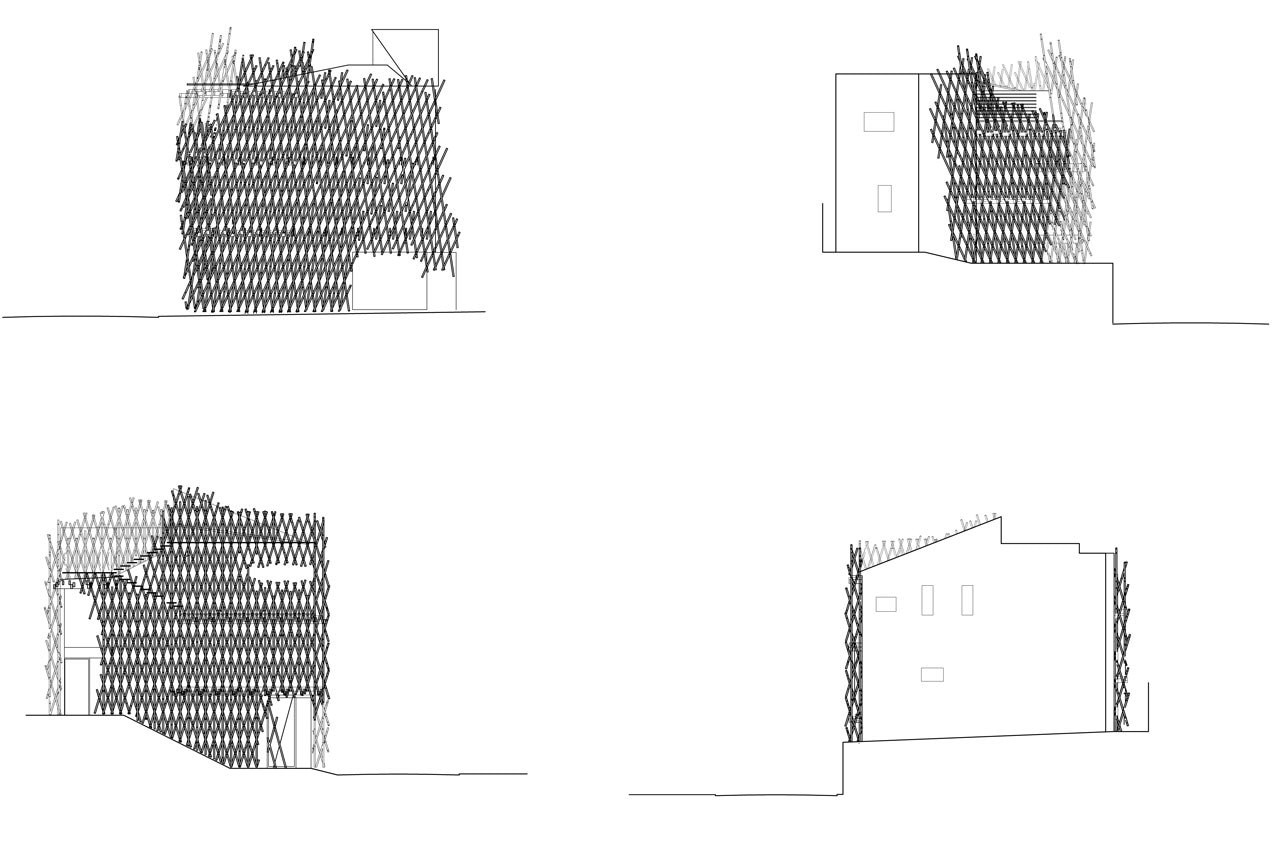
SunnyHills at Minami-Aoyama
Minami Aoyama 3-10-20, Tokyo
Design: Kengo Kuma & Associates
Structural engineers: Jun Sato Structural Engineers
General contractors: Satohide
Site area: 175,69 sqm
Building area: 102,36 sqm
Total floor area: 293,00 sqm
Main use: store
Number of stories: +2, -1
Floor area: 79,50 sqm
Structure: reinforced concrete, wood
Completion date: December 2013


